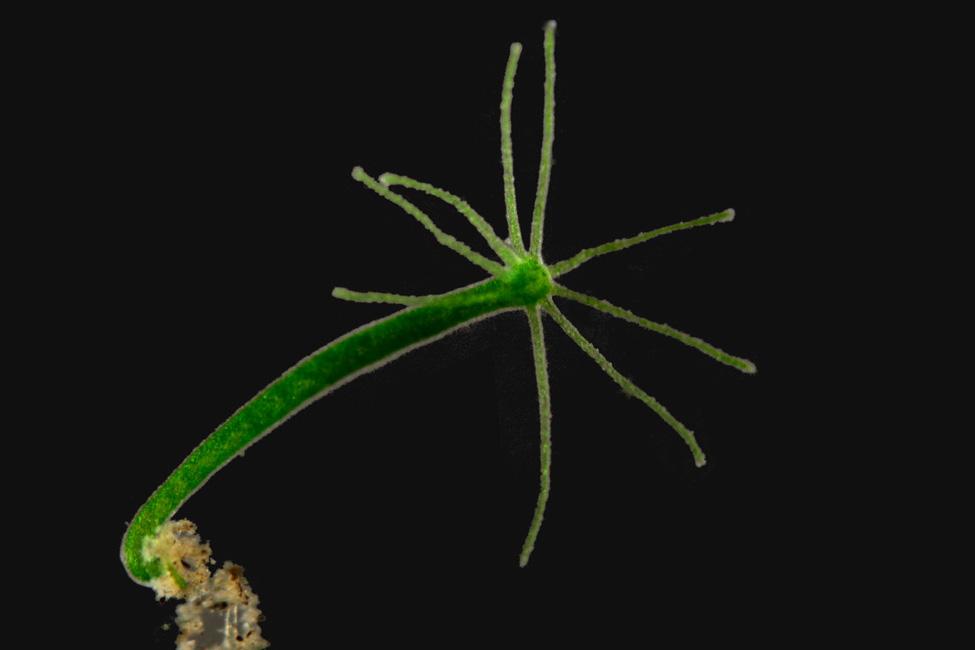Y: Are you ready for lunch, Don? I'm starving.
D: Just a second. Actually, I think the hydra I have under this microscope is about to eat something.
Y: You have a hydra?
D: It's my new low‑maintenance pet. Take a look.
Y: All I see is a slide of dirty water. Oh, there it is. Looks like a little tube with a ring of tentacles at one end. What's that next to it?
D: That's the tiny shrimp I think it's about to catch. Want to know how the hydra eats?
Y: Sure.
D: When that tiny shrimp brushes against one of the hydra's tentacles, the hydra's going to trap the shrimp and inject neurotoxins into it to paralyze it. Then the tentacles will contract to pull the shrimp in. Now you'd think the next step is for the hydra to stuff the shrimp into its mouth, right?
Y: Right.
D: The problem is, hydras usually don't have mouths.
Y: So what does it do?
D: It rips its cells apart to make a mouth every time it eats.
Y: The cells just move apart?
D: That's what some scientists thought for a while. But recently, a team of researchers found that the cells change shape instead of moving. The cells around what will be the hydra's mouth area flatten and elongate until an opening forms between them. After the hydra sucks its prey through this new opening, the mouth closes back up the way a cut on our skin would heal. When the hydra is ready to spit out any undigested leftovers, it rips itself a whole new mouth again.
Y: That's a lot of work for lunch. Speaking of which...
D: Okay, okay, let's go eat.









